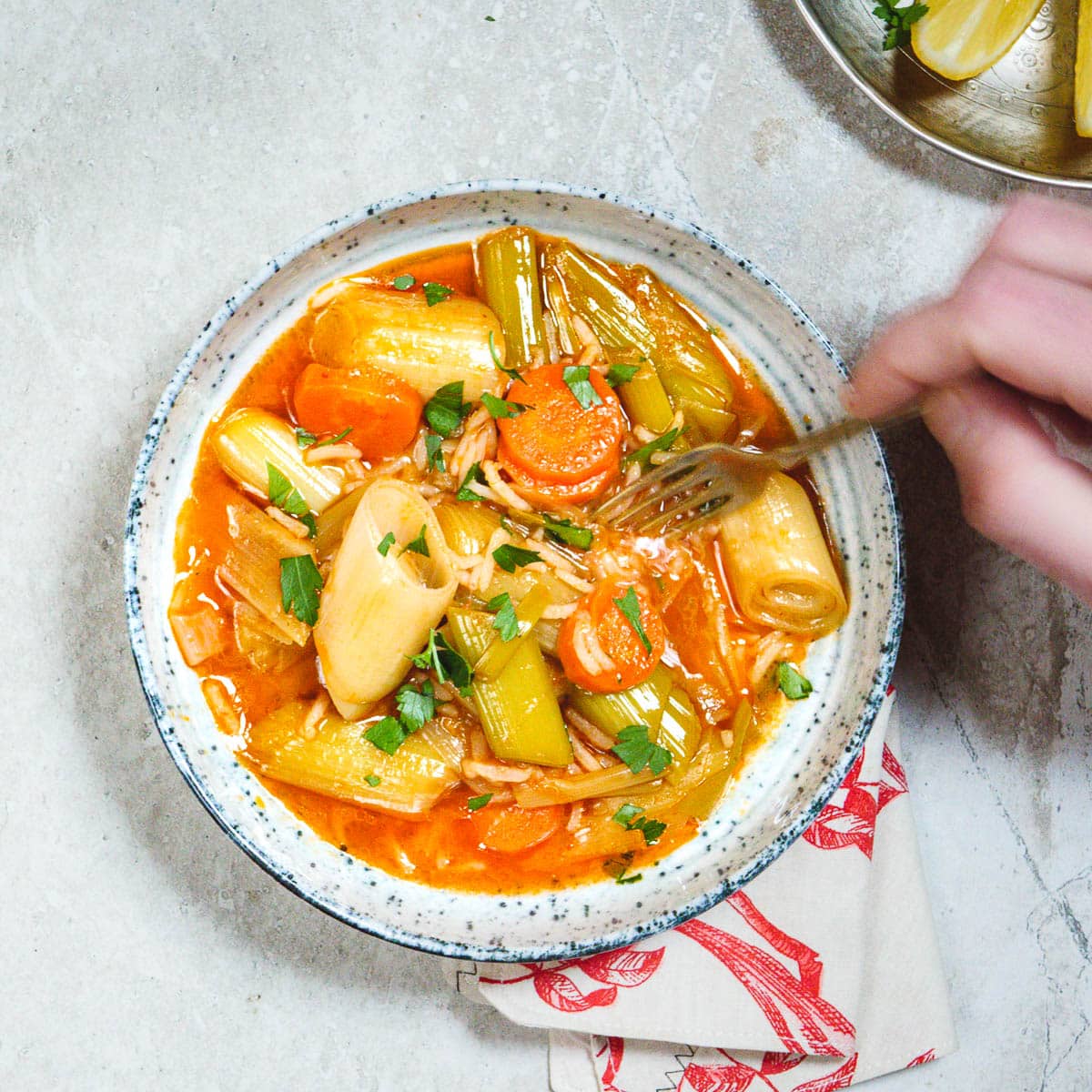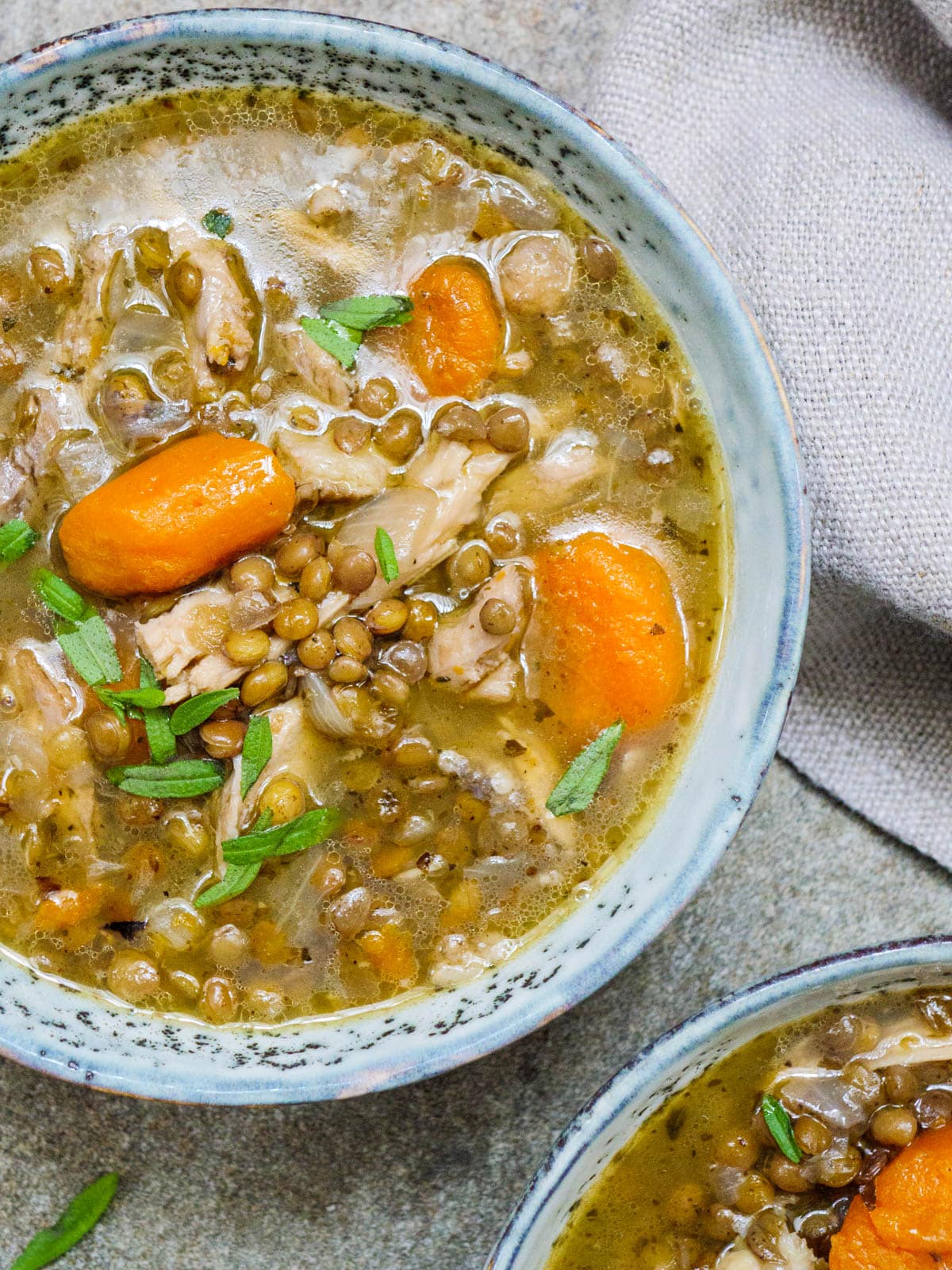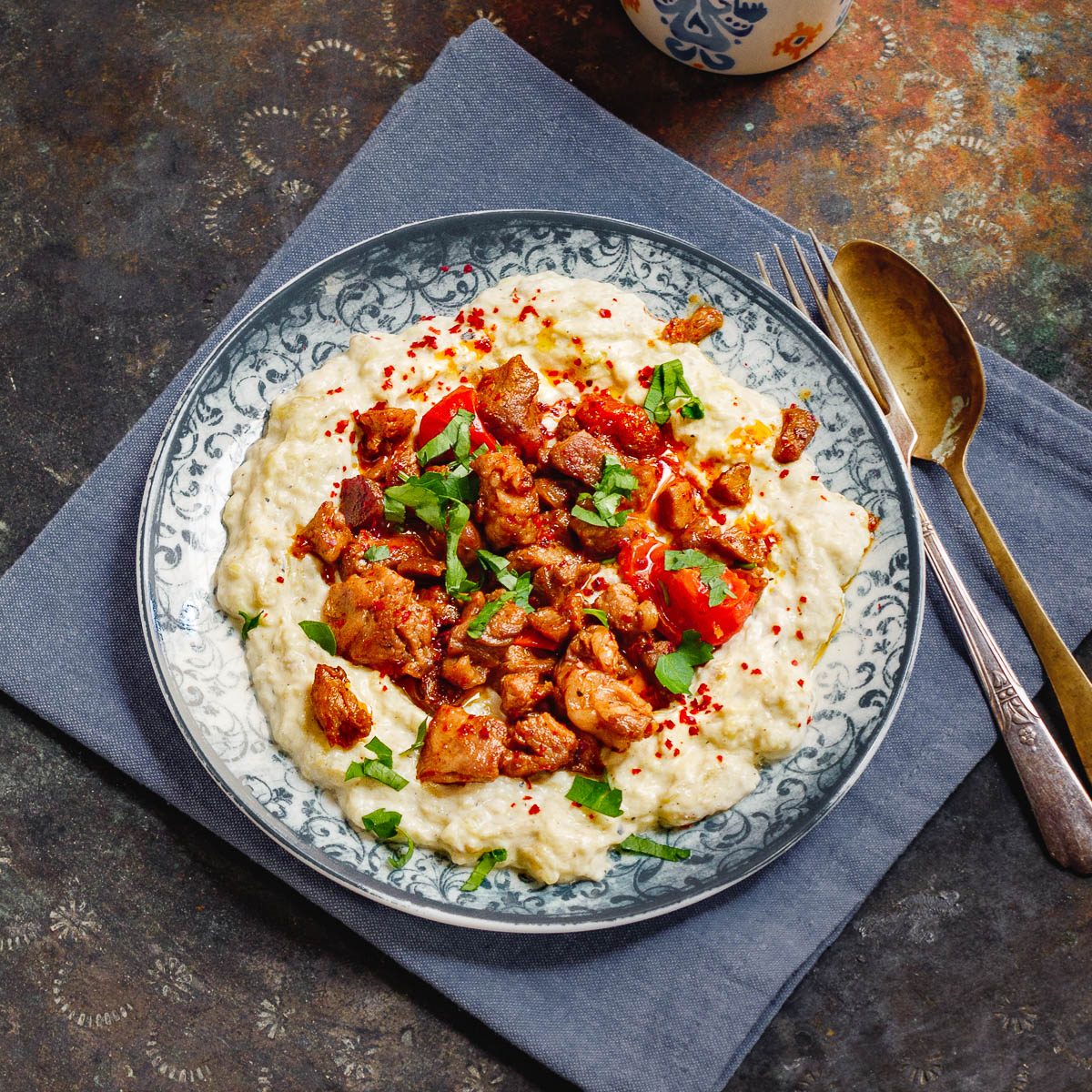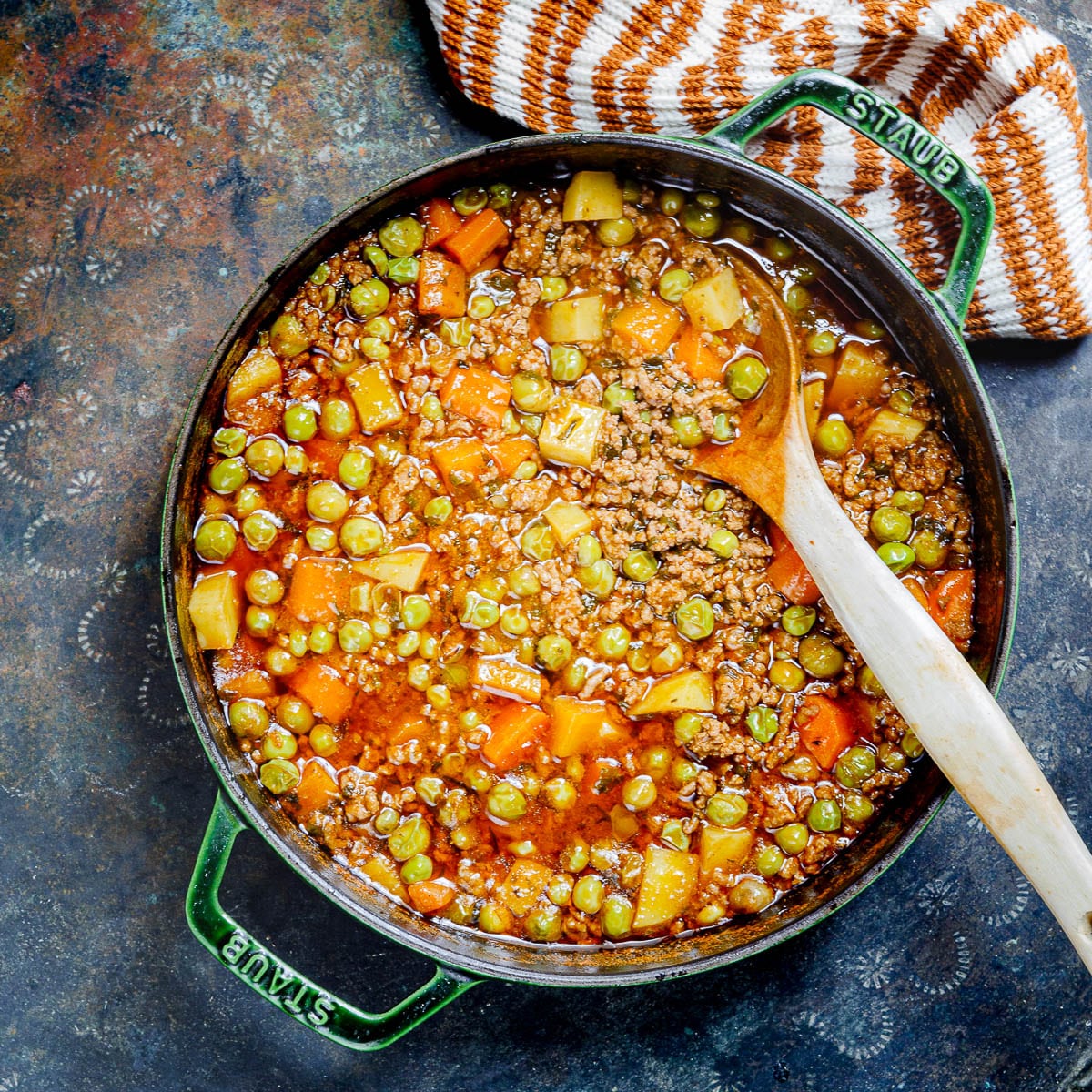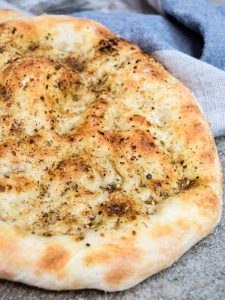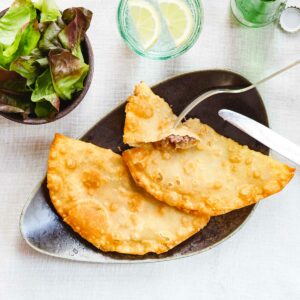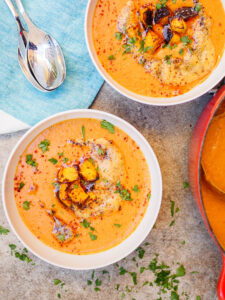Zeytinyağlı pırasa (literally “leeks with olive oil”) is a Turkish dish of leeks braised in a tangy sauce. The key ingredient of the sauce is a good quality extra virgin olive oil, and just enough lemon juice to make it tangy without getting too sour.
Leeks in Turkish cooking
Leeks are widely available in Turkey during the winter season. Yet, when consulting my Turkish cookbooks, recipes containing leeks are few and far between.
Like so many other ingredients in Turkish cuisine, leeks are primarily bound to one style of cooking. And unlike many Western dishes, it isn’t as one of many dishes in a stew or soup.
Rather, the leek is the star of the meal. As it should be.
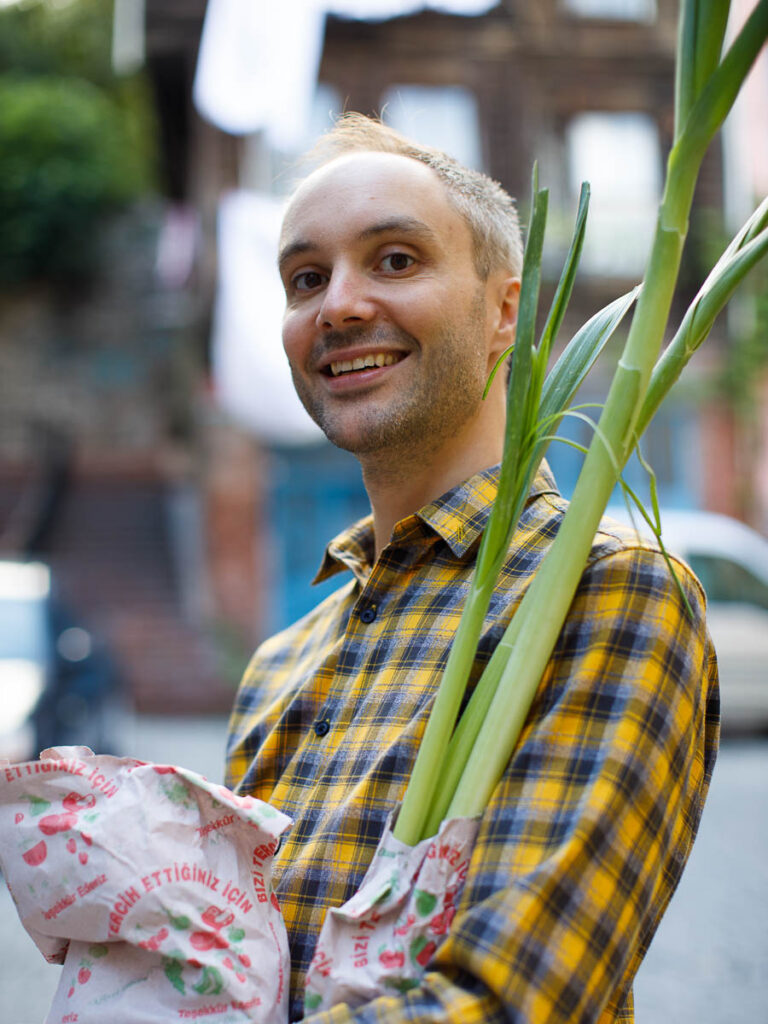
How to make leeks the star of the dish
It’s easy to look at leeks as just another type of onion. An ingredient to bolster the flavour of a stew or soup where other ingredients are more important.
Apart from a “burnt leek” craze among Western chefs a few years ago, seeing leeks occupy the centre stage in cooking isn’t all that common. Turkish grandmas beg to differ.
Although an uncommon sight at restaurant menus, braised leeks are in fact among the most favoured dishes of many Turks. And no wonder!
Leeks are sweeter and less pungent than most other types of onion, though I’d argue it’s got more character. Where yellow onions, red onions or shallots are happy to blend in, the presence of leeks in a dish is always obvious.
The key to making leeks the star of the dish, therefore, is to bring out the natural sweetness and deliciously soft texture.
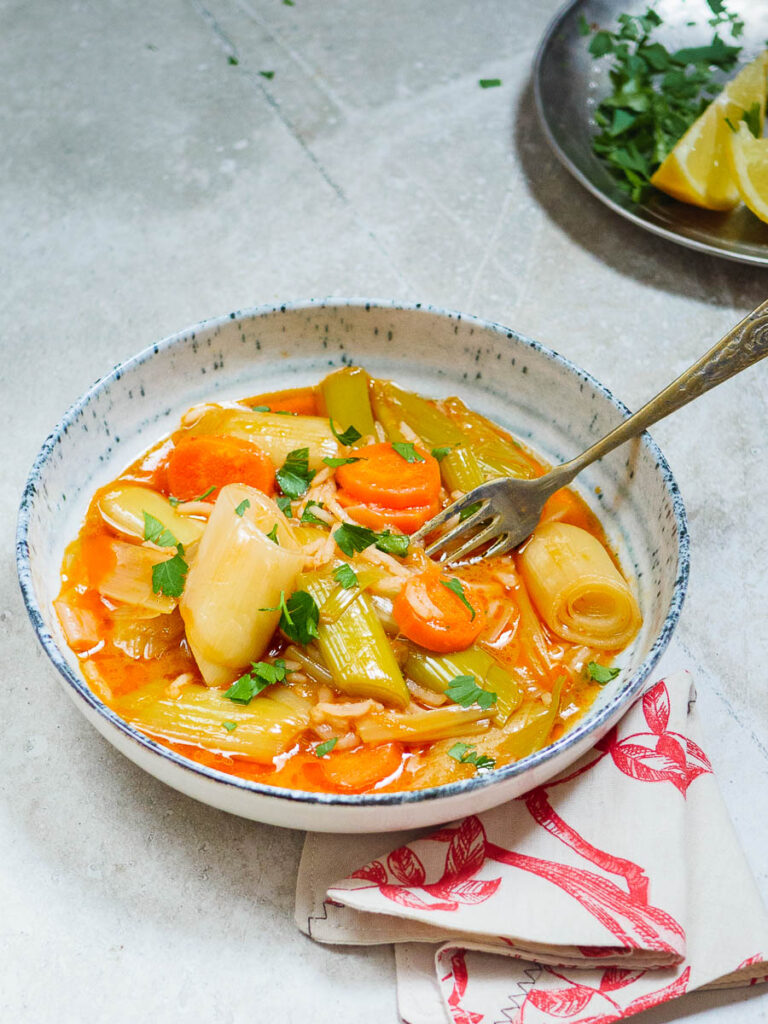
How to make zeytinyağlı pırasa
Nothing brings out the natural flavours of the leeks better than the Aegean cooking style known as zeytinyağlı in Turkish. You may know the technique from Greek lathera or arabic bil zayt, which are the equivalents in Greek and Middle Eastern cuisines respectively.
For this type of dishes, you braise the main ingredient slowly in copious amounts of good quality olive oil. Other ingredients are added only to bring out the flavour of the main ingredient, and never to overpower it.
In other words: This is not the time to be heavy handed with spices or other pungent ingredients!
The end result is delicate and absolutely delicious.
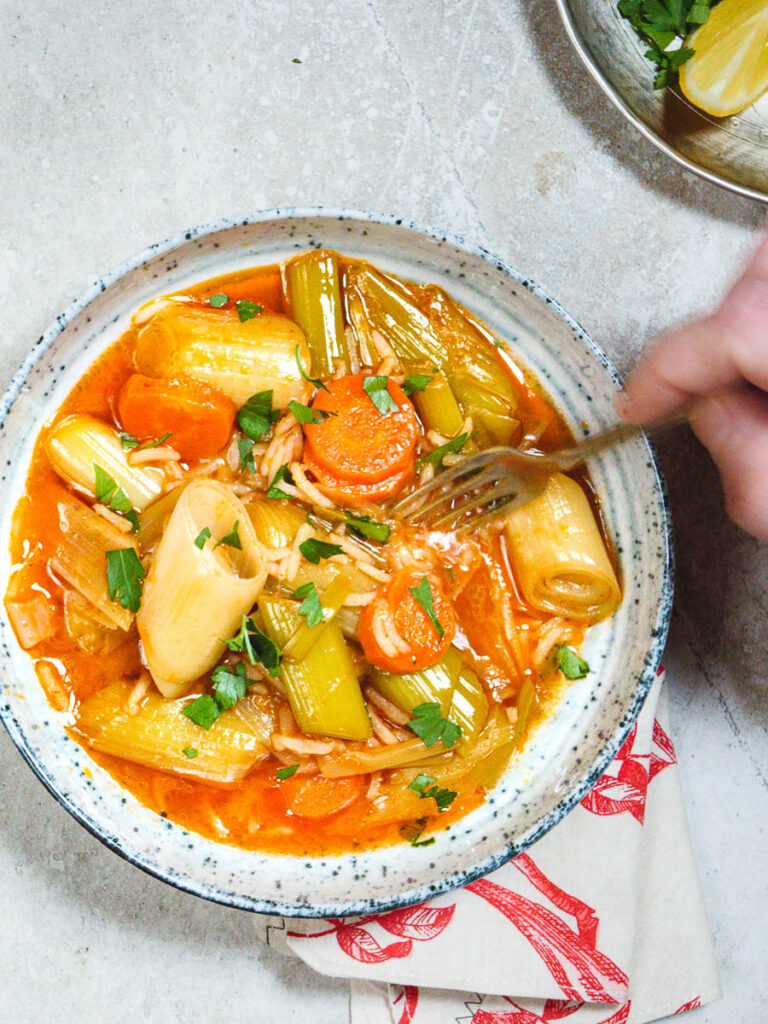
With leeks, a good squeeze of lemon juice is a great way to balance the sweetness. For this dish, you need enough lemon juice for the sauce to become tart.
In fact, some Turks refer to this dish as ekşili pırasa. Sour leeks. In some regions, they use grape vinegar instead of lemon juice.
While leeks, extra virgin olive oil and lemon are by far the most important ingredients in this dish, a few supporting ingredients help elevate the dish. Tomato paste for umami, rice for texture and fresh herbs for, well, freshness, all contribute to a beautiful dish.
How to serve Turkish braised leeks
In Turkey, zeytinyağlı pırasa is a comforting winter food.
It can be eaten as a main dish, with bulgur or rice alongside. If so, I’d add a few chickpeas to the rice for the extra protein. It’ll still be a light, but warming, winter dish.
Where it excels though, is alongside fish and even white meat. With the leeks bringing so much flavour, you needn’t do much with the fish or meat. Salt and pepper goes a long way.
You can also serve this dish as one of several dishes.
The recipe makes for 3-4 servings.
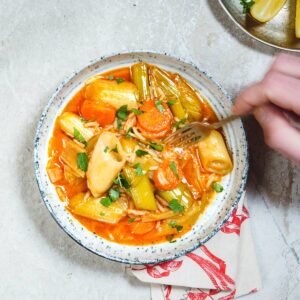
Turkish braised leeks (Zeytinyağlı pırasa)
Ingredients
- 750 g leeks
- 75 ml olive oil, (I use a mild extra virgin)
- 25 g tomato paste
- 1 medium carrot, peeled and cut into thin discs
- ½ tsp sugar
- 2 Tbsp lemon juice
- 200 ml boiling water
- 2 Tbsp rice
- chopped fresh dill or flat-leaf parsley, to serve (optional)
- salt and pepper
How I make it
- Cut the ends off the leeks. Remove the outermost layer, plus any other very thick layers. Cut into 3-4 cm (1-1 ½ in) slices, crosswise or diagonally. After this process, I'm usually left with around 500 g (slightly over 1 lbs) leeks. If you're left with a little more or less than this, that's perfectly ok.
- Heat a thick bottomed pot over medium heat. Add the olive oil and tomato paste and fry for a minute, stirring constantly. Add the leeks and carrot. Fry for another couple of minutes, stirring regularly.
- Add the sugar, lemon juice, water and a little salt and pepper. Bring to the boil, place a lid on and turn the heat down to low. Leave to simmer until the leeks have nearly completely softened, half an hour or more, stirring a couple of times in the meantime.
- Add the rice and stir well. Place the lid back on and leave until both the rice and the leeks are completely softened, 10-12 minutes. Keep an eye on it, adding more water if it's starting to look a little dry. The dish should be saucy, but not overly so. Once done, take off the heat and leave for a few minutes. Season with more lemon juice, salt and pepper to taste. Serve warm with a scattering of chopped fresh herbs, if you fancy.


